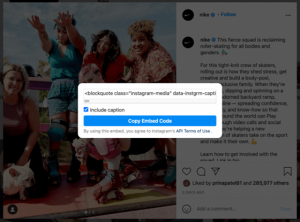by David Rodnitzky, January 26, 2015
A prominent investment bank recently raised its target on Facebook’s stock to $102 per share. If Facebook does hit that number, the company will be worth $285 billion, or about 84% of Google’s value as I write this. The investment bank’s target increase comes as a result of Facebook’s launch of the Facebook Audience Network (FAN), which they predict will drive $1.1 billion in incremental revenue to Facebook in 2016, and more than $5 billion by 2020. Many analysts miss where this revenue comes from. The likely loser in FAN’s growth is the AdSense/Google Display Network. Here I provide a brief overview of FAN and explain why it is likely to grow at the expense of AdSense.
What is FAN?
The Facebook Audience Network — in its current manifestation — is a mobile ad network. As a mobile publisher, you can elect to add the FAN code to your app or mobile Web site. When users click on an ad (which can either take them off the site to another page or drive an app install), Facebook — like any ad network — pays the publisher a revenue share of the advertiser’s spend.
As the FAN team notes in their introductory blog post, FAN has all the bells and whistles of standard Facebook advertising: “The Audience Network uses the same targeting available for Facebook ads today, including Custom Audiences, core audiences and lookalike audiences. It features the same measurement tools marketers use for their Facebook ads, too.” In other words, advertisers can use first-party data (custom audiences), second-party data (core audiences), and algorithmic discovery (lookalike audiences) to find the right targets for their campaigns.
This is huge news for advertisers because Facebook’s standard advertising platform offers the best demand creation targeting on the Web. So FAN will now enable these advertisers to replicate their successful Facebook campaigns off-Facebook on thousands of online publishers.
Why FAN Spells Trouble for Google
If Newton had created a law for the dynamics of ad networks, he might have said: “If one ad network goes up, another must go down.” In the case of FAN, the likely victim of FAN’s success will be Google’s AdSense for Publishers. AdSense works in exactly the same way as FAN — publishers add Google code to their sites and Google serves ads and shares revenue with the publishers. In 2013 (the last year of full financial data being reported) GDN drove more than $13 billion of revenue for Google — that’s 24% of Google’s revenue for the year.
AdSense drives so much revenue because it works for publishers; it is easy to set up, requires no interaction with advertisers, and reliably delivers “eCPMs” (the measurement of revenue per page view) at a rate that is higher than pretty much any network out there. So the only way a publisher would switch to something other than AdSense was if that alternative solution was better than AdSense on these factors — ease of implementation, ease of management, and profit. FAN meets the first two criteria easily: the implementation and management are identical to AdSense — simply insert the FAN code and wait for checks to start being deposited in your bank account.
Where FAN might have an advantage over AdSense, however, is eCPMs. Because Facebook has better data about consumers (recall the wonderful combination of first and second-party data that Facebook lets advertisers use), advertisers can make more informed decisions about how much to bid for a particular user. The more information an advertiser has that a person is likely to buy from him, the more that advertiser will pay for a click. This in turn drives higher eCPMs for publishers. Once FAN eCPMs exceed AdSense, publishers will have a financial incentive to move away from AdSense and over to FAN.
To be clear, don’t expect this to happen overnight. FAN has two challenges to overcome before it can dethrone AdSense. First, FAN needs a critical mass of advertisers to use the system. eCPMs are not only determined by the quality of the targeting, but also by the competition for ad inventory. If there aren’t enough advertisers participating in FAN, high-quality inventory will not be bid to its optimal value, which will reduce eCPMs to below Google’s eCPMs (Google already has millions of advertisers on GDN, so competition for bids is not an issue for them). Facebook could mitigate this problem by over-incentivizing publishers with huge revenue shares (perhaps even up to 100% revenue share for the right publishers). At the end of the day, however, the biggest enemy of FAN will likely be time — it will just take time to get advertisers to start using the system and growing the critical mass of advertisers.
The second challenge to FAN is Google innovation. Google has been working tirelessly to catch up with Facebook’s treasure trove of consumer data. Google+ is the best example of Google’s efforts around data collection. As one commentator noted, “Google scrambled to build Google+ because it watched Facebook and saw users were willing to volunteer biographical data to their social network, and that data is crucial to serving accurate ads users want to click. Search keywords and algorithmic analysis of your Gmail and other content weren’t enough.” Google has also been actively working to connect user behavior across devices, develop sophisticated attribution analysis, and develop new ad units to increase advertiser insight and maintain or grow eCPMs. Google is an innovative and aggressive company — don’t expect them to sit quietly and let Facebook cut into 24% of their revenue!
FAN 2.0 – Mobile and Desktop
Right now, FAN is just a mobile ad network. This makes sense, given that about two-thirds of Facebook’s revenue is currently from mobile advertising. The majority of Google’s AdSense revenue, however, currently comes from desktop users. While there’s no doubt that mobile will continue to grow as a percentage of Internet usage, desktop will be an important part of the Internet advertising ecosystem for a long time. It stands to reason, therefore, that Facebook will likely roll FAN out to desktop publishers in the near future. If projections of $5 billion on annual mobile revenue from FAN by 2020 are correct, the overall number will be higher once desktop is included.
Again, none of this spells the end of Google. Google has plenty of revenue lines that it is trying to build out, and will continue to innovate, and AdSense will still be a multibillion-dollar annual business. Still, if FAN is successful — and I think it will be — it will have a material impact on Google’s AdSense revenue. Five years ago it seemed like there was going to be one dominant middleman in the online advertising world — Google. FAN is the first network that will truly compete with Google for that throne.
(400)
Report Post




